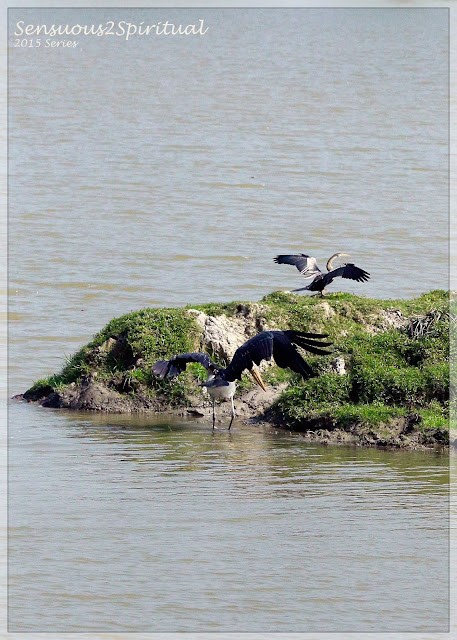A darter is busy drying its wings by the water bay while a stork prepares for its flight. Both birds look like they are mimicking the other but clearly both have very different plans.
The diverse density of the avian kind makes #Kaziranga an attractive destination for Bird-lovers.
A few more postcards of the avian kind can be followed on the next few links:
Also, do read the Kaziranga Trails through the rest of the postcards in this series:
The diverse density of the avian kind makes #Kaziranga an attractive destination for Bird-lovers.
A few more postcards of the avian kind can be followed on the next few links:
- Postcards from Kaziranga: Stork stalking food
- Postcards from Kaziranga: Blurring reflections, the storks flight
- Postcards from Kaziranga: Bar-headed goose
Also, do read the Kaziranga Trails through the rest of the postcards in this series:
- Kaziranga Trails: our first North East India travel
- Postcards from Kaziranga: As the mist lifts, display of the rising morning
- Postcards from Kaziranga: Indian wild elephant, stalking the herd while they cross a river
- Postcards from Kaziranga: One horn rhino in its water-full, rich-green habitat
Hope you enjoy this trail.
Xoxo,
S2S 







